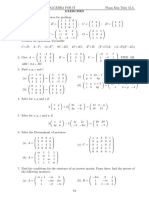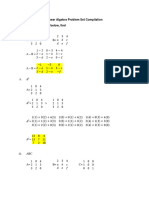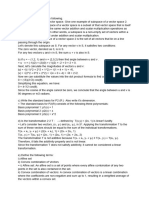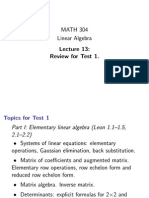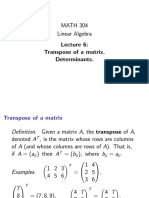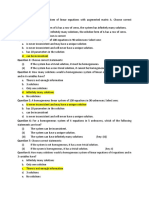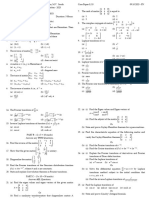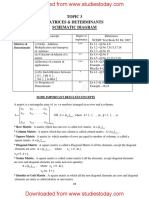0% found this document useful (0 votes)
15 views26 pagesChapter 4 Assignment
The document contains a series of linear algebra problems related to vector operations, including vector addition, linear combinations, spanning sets, linear independence, and basis determination for various vector spaces. Each problem presents specific vectors or sets and asks for calculations or proofs regarding their properties. The problems cover a range of topics, including geometric interpretations, linear dependence, and finding bases for R2 and R3.
Uploaded by
theresa.linyenshinCopyright
© © All Rights Reserved
We take content rights seriously. If you suspect this is your content, claim it here.
Available Formats
Download as PDF, TXT or read online on Scribd
0% found this document useful (0 votes)
15 views26 pagesChapter 4 Assignment
The document contains a series of linear algebra problems related to vector operations, including vector addition, linear combinations, spanning sets, linear independence, and basis determination for various vector spaces. Each problem presents specific vectors or sets and asks for calculations or proofs regarding their properties. The problems cover a range of topics, including geometric interpretations, linear dependence, and finding bases for R2 and R3.
Uploaded by
theresa.linyenshinCopyright
© © All Rights Reserved
We take content rights seriously. If you suspect this is your content, claim it here.
Available Formats
Download as PDF, TXT or read online on Scribd
/ 26

